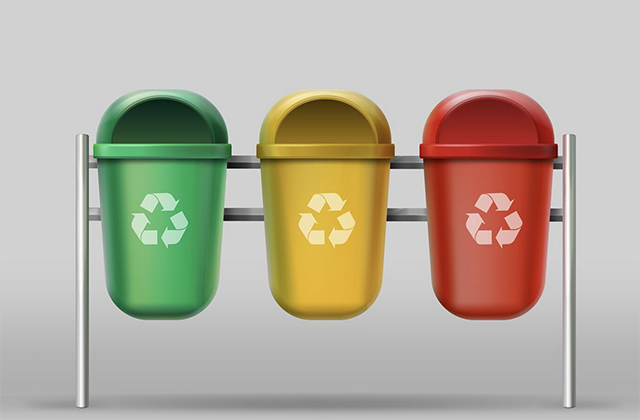Introduction
Solid waste is a major environmental problem and requires better ways of handling it. One is providing a bin hire Adelaide in your neighborhood. Here are 8 examples of recycling and treating solid waste.
Burning in incinerators
Incinerators are complex machines that burn waste at extremely high temperatures. (They’re also called thermal treatment facilities.) By burning trash, they can turn it into a small amount of ash and water vapor, which makes them popular with people who don’t have access to landfills. They’re used in many parts of the world, including Europe, North America, Australia and Asia.
Many incinerators produce electricity as well as heat from burning garbage; this is called combined heat and power (CHP). Some incinerators also generate steam for district heating systems or treat gases emitted from the process to prevent them from being released into the air.
Incineration reduces the volume of solid waste by about 90% compared with landfills—which means less space is needed for disposal sites—and it’s more efficient than other forms of disposal such as recycling or composting because no energy is required to break down organic material like food scraps into reusable materials like compostable plastics.[1]
Landfills
Landfills, the most common method of solid waste disposal in the United States, are often a source of environmental concern. This is because they typically involve burying waste in a hole and covering it up. This not only prevents us from seeing what we’re doing—and therefore feeling responsible for our actions—but also has an impact on groundwater, soil quality and air quality. Landfills also require a lot of space; if you live near one you may find yourself with little room to play or breathe fresh air due to their proximity to your home. Thankfully there are ways around this problem!
Recycling and composting
Recycling means converting waste materials into new products, such as paper products or aluminum cans. Composting is a way to recycle organic waste, such as food and yard trimmings.
Recycling and composting are important because they reduce the amount of solid waste going to landfills—and landfills produce methane gas that can harm the environment by contributing to climate change. Recycled materials are also used to make new products like recycled plastic lumber or glass bottles that have been made into windows for homes and businesses.
Waste-to-energy
Waste-to-energy is a recycling process that can be used to convert municipal solid waste (MSW) into energy. The goal of this process is to create electricity, heat, or transportation fuels from MSW. Waste-to-energy plants are also sometimes called “energy from waste” plants or even “waste incinerators.”
There are three main ways you can use waste for energy: incineration (burning), pyrolization (using heat to turn the material into liquid), and gasification (using high temperatures and pressure in order to change solid materials into a synthetic gas). All three methods have their pros and cons, but they have one thing in common: they all require tons of trash!
Liquifying solid waste by anaerobic digestion to produce biogas or biofuel.
- Liquifying solid waste by anaerobic digestion to produce biogas or biofuel.
- In this process, organic materials like food scraps and plant debris are converted into biogas. The gas is produced by a reaction between the organic matter and microbes in an oxygen-free environment. Biogas can be harvested from the digester tank and used as fuel for on-site heating systems or used as an input into other processes that convert it into electricity, heat, or transportation fuels like ethanol (which we’ll cover later).
Mechanical biological treatment (MBT) – combines mechanical and biological methods of waste treatment.
Mechanical biological treatment (MBT) is a combination of mechanical and biological methods of waste treatment. MBT involves the breakdown of organic substances by microorganisms in an anaerobic environment.
- MBT is used to treat organic wastes, sewage sludge, animal manure and food processing waste.
Waste sorting – separating the recyclables from the rest of the waste.
Waste sorting is the process of separating waste into recyclables and non-recyclables. It goes beyond recycling, as it also involves disposal of non-recyclable things that can be reused or composted.
The best way to sort your own waste is by identifying what type of products they are made up of, and then finding out where they can be disposed of properly. For example, if you have a paper towel with bits of food still on it, it’s not clean enough for recycling: you need to wash it first before throwing it out in the bin!
You should also keep an eye on how much plastic you buy in comparison with other materials (e.g., glass bottles vs aluminum cans) so that your household does not become too dependent on single-use plastics like straws or takeout containers which cannot easily be recycled at home due to their size limitations or because they contain multiple types which cannot be separated manually; instead try using reusable containers such as jars instead!
Here are 8 examples of recycling and treating solid waste.
You can burn waste to generate energy. You can use landfills to store waste. You can recycle waste. You can compost waste. You can turn waste into fuel. Or, you might use mechanical biological treatment (MBT) to treat the solid wastes you create in your life and business, turning them into water and soil amendments that you can reuse on site or sell to other companies that need similar materials for their operations.
To learn more about these different methods of treating solid wastes, visit [The Solid Waste Association of North America](https://www.swana-net/).
Conclusion
Hopefully, you’ve found this post useful and informative. It can be hard to find solid waste treatment solutions that are practical, cost-effective and environmentally friendly. While we still have a long way to go before there is a global system that treats all our solid waste in an efficient manner, there are many options available today for treating your own solid waste at home or on the job site.

